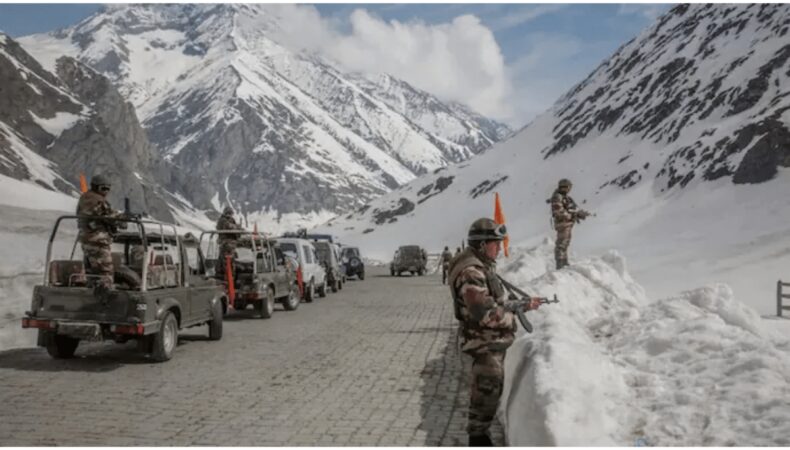India-China troops had a run in along the Line of Actual Control (LAC) on December 9. The skirmish took place in the Tawang Sector of Arunachal Pradesh. Some Indian soldiers were left injured as a result of the clash. But there were ‘minor injuries’ on both sides, the officials claim.
According to the sources, at least six Indian soldiers were injured who were brought to Guwahati for medical treatment. They also claimed that there were twice as many soldiers injured on the Chinese side. The military sources also claimed that the Chinese came onto the Indians with a heavy force of 300 soldiers but did not expect the Indian military to be well-armed as well. After the clash, both the sides “immediately disengaged”.
“In the last few weeks, there have been two to three occasions where our fighter jets had to be scrambled to tackle the Chinese drones moving towards our positions on the LAC. The Su-30MKI jets had to be scrambled to tackle the air violation threat,” a source informed ANI.
The Indian Defence Minister, Rajnath Singh, is set to address the situation in the Parliament. Fellow Union Minister, Piyush Goyal, has urged to move up the address considering “the gravity of the situation and the request made by the Opposition”.
History of India-China clashes
India-China border dispute has been raging on since the Sino-Indian War of 1962. The disputed areas include some areas of Ladakh and Arunachal Pradesh. The 1962 war was fought along both the frontiers. In 1967, there was also a skirmish along the Sikkim border. The border clashes have been ongoing throughout the years.
In June of 2017, a military stand off took place between Indian and Chinese military forces along the Doka La pass, in the contested region of Doklam. The clash stemmed from the Chinese attempt at constructing a road in the heavily-disputed area. The Chinese had brought heavy road-building equipment to the area. Earlier, China had constructed a dirt road ending in Doka La, the region where the Indian troops were stationed.
Bhutan and India considered the site of the building of the road to be a disputed territory leading to Indian intervention in the road construction. Throughout July and August, China, India and Bhutan kept going back and forth about the border dispute. Finally, on August 28, India issued a statement claiming that both sides had settled on a quick disengagement.
In 2019, India and China reached an agreement regarding coordinated border patrolling along one of the disputed sites on the Line of Actual Control. But in 2020, the two sides once again clashed in the Galawan River Valley. This led to the death of twenty Indian soldiers. The Chinese authorities have not confirmed the reports claiming that over forty soldiers had been killed on the Chinese side.

After the clash
According to the sources, such clashes have been going on since 2006 due to some areas of “differing perceptions” along LAC. According to the officials, the Indian response was “firm and resolute”. The Indian commander in the area engaged in a flag meeting with his Chinese counterpart in an attempt to “restore peace and tranquillity”.
Beijing has not commented on the clash so far.
Amidst the growing tensions between the two nations, this dispute will contribute to worsening the tensions. India has chosen to build closer alliances with the West, especially with the Quad allies – Australia, the US and Japan – in the quest to counter the growing hegemonic influence of China over the region.













